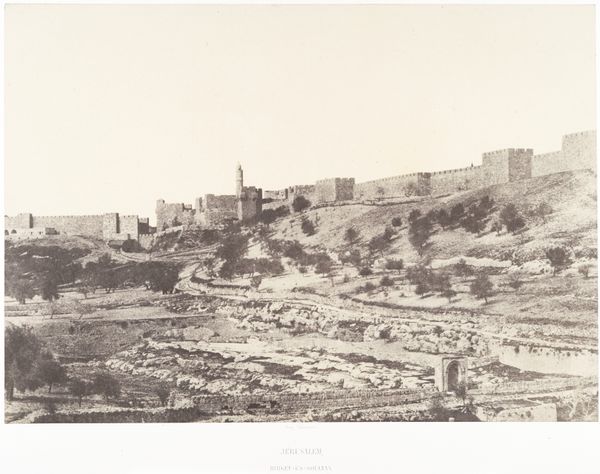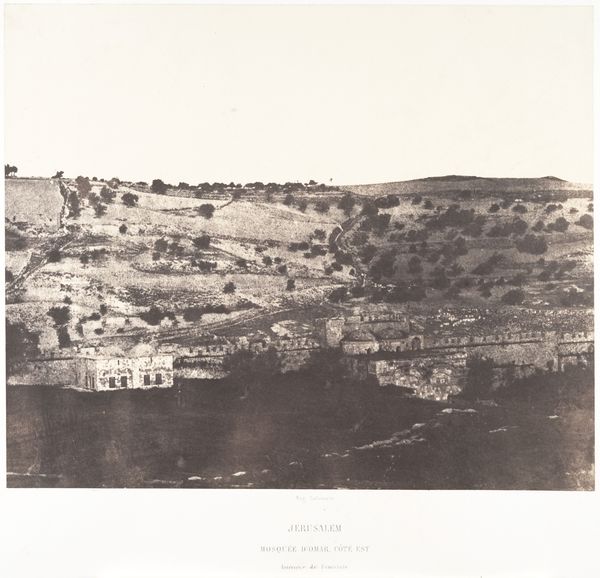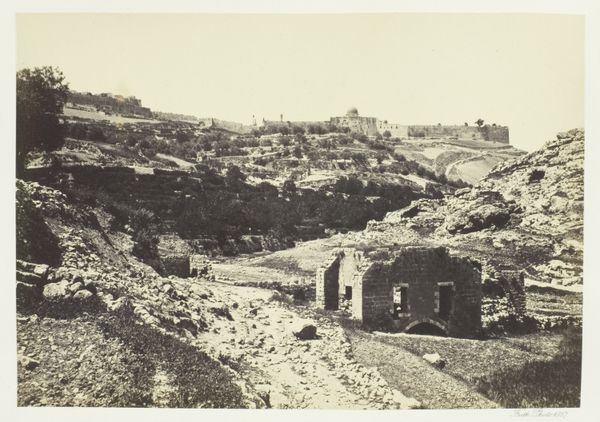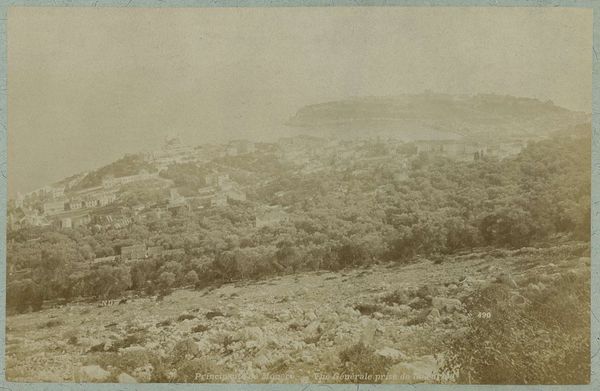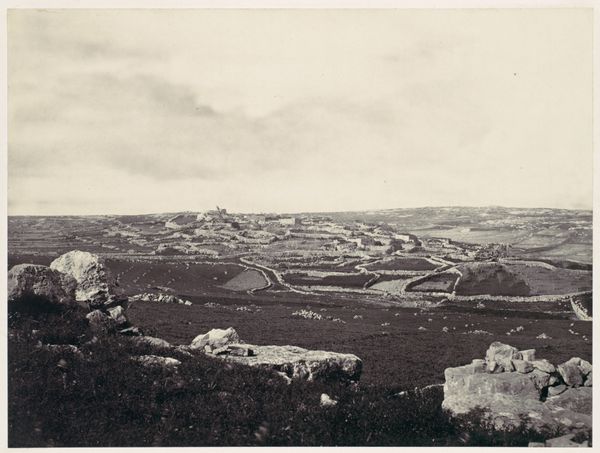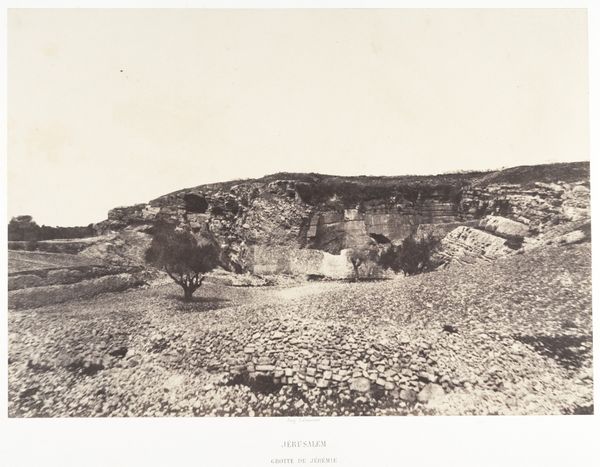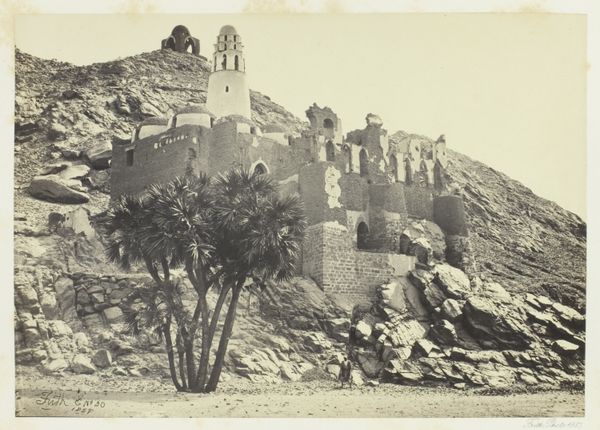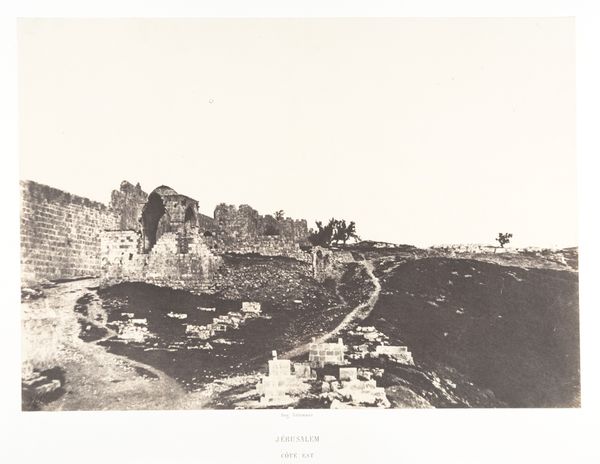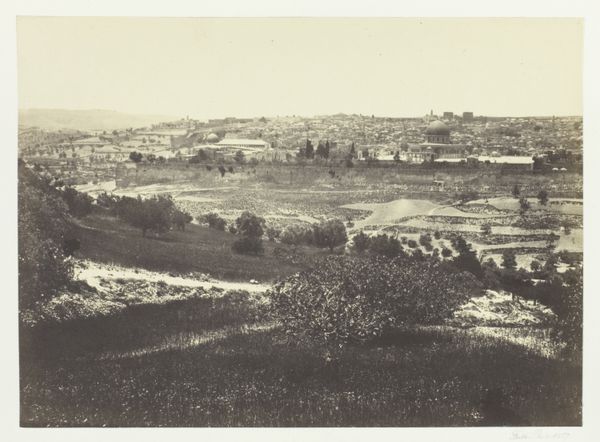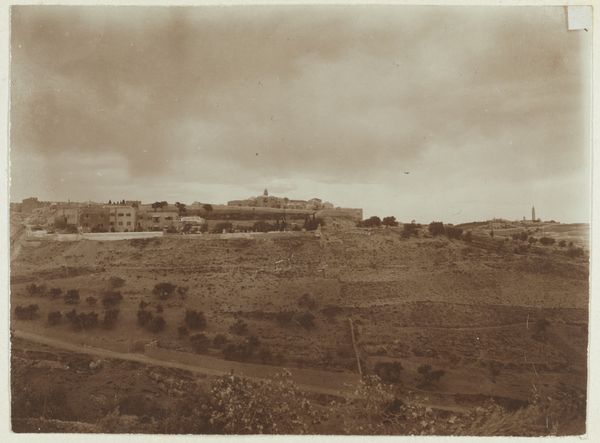
silver, print, photography
#
silver
# print
#
landscape
#
nature
#
photography
#
ancient-mediterranean
#
realism
Dimensions: 15.9 × 22.5 cm (image/paper); 29.3 × 42.6 cm (album page)
Copyright: Public Domain
Curator: The silvery tones of this 1857 print, entitled "Bethlehem, with the Church of the Nativity," are captivating. It's the work of Francis Frith, who traveled extensively in the Middle East. Editor: My first impression is a stark and slightly mournful beauty. The tonality of the silver print feels incredibly precise in its rendition of light and shadow. The Church sits so stalwart on the hilltop. Curator: Precisely. Frith, in choosing this high vantage point, highlights the Church's imposing presence. Yet, he’s also capturing a broader socio-political landscape. Bethlehem, a site of pilgrimage but also a strategically important locale. Editor: True, the placement lends a sense of weight and history, but the composition, viewed through the rigorous geometry of receding lines and planes, to me signifies a balance between sacred space and secular world. The man in the midground sitting—almost meditating—amidst the scene is well positioned as well, directing one's attention back into the frame, not away. Curator: Consider the technology itself. Photography at this time was incredibly cumbersome. Transporting equipment, preparing the light-sensitive plates on-site, speaks volumes about Frith’s dedication and the burgeoning interest in documenting the Holy Land for European audiences, framed, as these depictions surely are, through a colonial lens. Editor: Certainly. But I'm drawn also to the sheer artistry: the contrasting textures of the rugged terrain with the ordered architecture, the almost photographic “realism” in this single silver print, with varying gray scales defining depth and light, imbuing this piece with a sense of formal and enduring strength. Curator: You raise a critical point. This work, presented to audiences in Europe, likely served as a form of visual tourism, shaping perceptions, reinforcing religious narratives, and ultimately solidifying a specific view of the “Orient” rooted in colonial power dynamics. What exactly was Bethlehem expected to 'be' for Western audiences viewing such imagery at the time? Editor: A loaded question. But it prompts an exploration of this photographic object itself and how these combined factors shape our experience and knowledge of it. To focus only on political narrative would disregard that it has also an almost monumental quality through sheer craft, from composition to process to the choices defining tone and detail. Curator: Absolutely. And engaging with this historical image necessitates navigating a complex interplay of form, content, and context. Thank you for the fresh and poignant formal analysis, Editor! Editor: Likewise, Curator, I find your insight on colonial context essential to understanding both the impact and historical significance of this particular work.
Comments
No comments
Be the first to comment and join the conversation on the ultimate creative platform.

